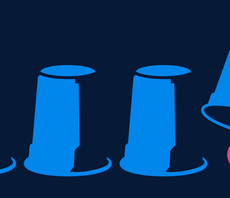
Partner Insight: Let's get real (about interest rates)
Investment Week
As I was driving home recently, I called Charles Shriver. We were talking about this Special Topic when he said something quite clever. It perfectly captured how to think about interest rates in the future.
Before I tell you what he said, let me provide some background:
Charles is a portfolio manager and cochair of the Asset Allocation Committee (AAC). We work together on all of our AAC Special Topics. He’s a fantastic investor, collaborator, and sounding board.
Prior to our conversation, Charles and I had asked Cesare Buiatti, senior quantitative investment analyst, to backfill the history of real interest rates—in other words, interest rates with inflation stripped out—in the United States by historical regime.
Cesare estimated the average real rate during each of the following regimes:
1. Postwar Boom (1955–1969)1
This era of prosperity had the strongest economic growth and the lowest unemployment of our four regimes. Inflation was also low, in the 2% range. Automation technologies and a broadening labour force that included more women, minority groups, immigrants, and globalization drove significant productivity gains.
2. Stagflation (1970–1981)
During the Stagflation regime, inflation spiked due to supply shocks, even when demand was weak because of economic stagnation. Inflation was high and often unanchored—in other words, consumers did not expect it to be temporary. Growth in gross domestic product (GDP) was low and unstable.
3. Old Normal (1982–2007)
The steady decline in interest rates was the defining feature of this era. Economic growth and inflation were “normal,” at about 3% each. Capital markets outperformed the economy due to rising valuations and cheap leverage.
4. New Normal (2008–2019)
After the global financial crisis (GFC), we entered an era of extremely accommodative central bank policy. In the New Normal, the economy got stuck in neutral, with low rates, low growth, and low inflation. This regime ended with the coronavirus pandemic.
It’s difficult to define the current regime as we unwind pandemic distortions.
What did Charles say?
As I was white-knuckling the four-lane transition on Light Street to make a right on Conway, with my head turned toward the car’s blind spot, I asked Charles what Cesare’s results looked like.
His answer, like a TV jingle or a Taylor Swift song, has been an earworm stuck in my brain since this conversation:
“The New Normal was abnormal.”
It was indeed. The table below shows the average real rate by regime. To estimate the
The full article is available here. This article was published at Investment Week.
Comments are closed for this article!